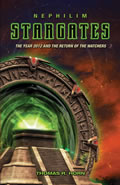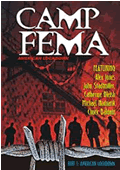PART 3
By Thomas R. Horn
February 12, 2012
NewsWithViews.com
Acrostics, Anagrams, and a Real-Life Conspiracy Code?
Of the
two layers of historical context discussed prior, now the lower older
level demands our attention. While we can see ample motivation for the
redactor to modify the pre-1590 phrases, there is no logical reason that
a sixteenth-century forger would craft a list so long into the future.
Even more so, there is no good reason he would forecast the destruction
of Rome when the papists have an obvious vested interest to the contrary.
This is a powerful argument that the post-1595 prophecies are indeed an
accurate representation of the original document. We will likely never
know for sure who wrote the original but it very could have been Malachy.
The reason the post  publication
prophecies have a different character and a stranger, ironic, even sarcastic
realization is that they are very likely the genuine article.
publication
prophecies have a different character and a stranger, ironic, even sarcastic
realization is that they are very likely the genuine article.
It was suggested prior that an Englishman, Nicholas Sanders, may have referenced the original document in Rome after he journeyed from the British Isles. Sanders (1530–1581) was an Oxford professor from a staunch Roman Catholic background and a link in a long chain of missionaries sent to Ireland to combat the spread of Protestantism. His writings are credited as the basis of most Roman Catholic histories of the English Reformation. Not surprising, given the dubious nature of that work, the large quantity of inflammatory spurious statements within earned Sanders the nickname of “Dr. Slanders” in England.
The historical context of this period is during the confusion and crisis surrounding the English reformation when Elizabeth I, Henry VIII’s daughter, came to the throne of England and Ireland in 1558 advocating Protestant theology. Catholics fearing retaliation for their harsh treatment of Protestants panicked. This caused papal loyal, Sanders, to vacate his Oxford chair in 1560 and hightail it to Rome, where he became a priest and doctor of theology. While it lasted, Rome was good for Sanders.
While in Rome, he hobnobbed with influential papists like Cardinal Hosius whom he served for a time. It was during this time that he published his books that we will subsequently examine. Later, he conspired with James Fitzmaurice Fitzgerald to launch a papal military invasion of Ireland. They wanted to secure Ireland for the Pope and vacate Protestants. Sanders and Fitzgerald landed a force of some six hundred Spanish and Italian troops under papal authority at Smerwick harbor in Ireland, instigating the Second Desmond Rebellion. While they enjoyed some superficial success, this campaign was ultimately unsuccessful and Sanders is believed to have died of cold and starvation hiding out in hinterland of Ireland in 1581.
It was during the heady days in Rome, around 1571, that Sanders’ authored De Visibili Monarchia Ecclesiae (“From the Monarchy of the Visible Church”) which provided the first account of the travails of the English Roman Catholics as a consequence of the reformation. While the book’s purpose was to generate sympathy for English Catholics, it leads scholars to suspect he could have had access to the original prophecy of the popes document. The clue which suggests that he must have been aware of the prophecy of the popes is that, in his book, he argues, “…to measure time, nothing is more advisable that the series of the Roman pontiffs!”[1]
This discussion derives from an extremely rare book written in French entitled, La Mystérieuse Prophétie des Papes (“The Mysterious Prophecy of the Popes”), published in 1951. The authors of the coming new book Petrus Romanus were fortunate to find a copy of this sixty-plus-year-old work and to have worked diligently to translate it to English. What we found is astonishing: nothing short of a real-life conspiracy code. Written by René Thibaut (1883–1952), a Belgian Jesuit, the book is a meticulous reading of the prophecy which comes to completely different conclusions than his skeptical predecessors. Adopting the methodology of a mystic as well as a mathematician and scholar, he makes a compelling case that the prophecy of the popes is a real supernatural prophecy. Nevertheless, he argues the author of the prophecy is probably not Saint Malachy but someone who prophesied pseudonymously in his honor, in the same way a nameless second temple period Jew may have composed 1 Enoch, perhaps also redacting ancient source material.[2] What Thibaut took into account that his more severe Jesuit brothers neglected are the layers of historical context discussed prior. He appropriately recognizes an authentic, more aged layer of text which was massaged by a sixteenth-century interloper. Thibaut somewhat agrees with the former analysis that the earlier prophecies were subjected to tampering, but he argues that the last forty-one suggest a much older document of Celtic origin. While he is reluctant to authenticate the legend, he refers to the author as Pseudo-Malachy, believing him to be Irish. He bases this on the stylistic use of numbers and word plays which form many acrostics and anagrams.[3] Commenting on the style, he observes, “Note that this way of dividing the words to sort various meanings is a method dear to the ancient Irish.”[4] A simple example of an anagram is seen in the Latin text “Peregrinus apostolicus”[5] which was the prophecy for the ninety-sixth pope on the list, Pius VI. The anagram not only reveals the papal name, it does it twice: PeregIinUS aPostolIcUS. That’s right! The name “Pius” is rather transparently embedded in the original Latin text twice! Can you imagine that perhaps we now have even a third level of context to examine?
This appearance of the name “Pius” is rather astounding considering we have a published copy dated almost two hundred years before Pius VI was elected. Furthermore, he argues the encrypted couplet within “Apostolic pilgrim” signifies both Pius VI and the very next pope Pius VII who were both forced into foreign exile (i.e., pilgrims). He also suggests that the repetition serves as a poetic refrain. In other words, “Pius! Pius!” is similar to the excited binary “Mayday, Mayday!” that sailors cry out in dire circumstances.[6] He demonstrates many similar patterns of words and numbers embedded in the list incorporating them into detailed charts and illustrations. His work is challenging and numinous. The most electrifying is his calculation of the forty popes prior to Petrus Romanus. Most startling for us, he demonstrates that many of these cryptograms point to one particular year. But first, he distinguishes the Malachian prophet from those who have set dates for the end of the world in the past:
But even if he believed that, one has no right to compare it to the false prophets who, in troubled times like today announced the imminent coming of the Antichrist and the Last Judgment. For, unlike those birds of ill omen, our prophet has so little intent to frighten his contemporaries that he provides 40 popes before the supreme deadline! 40 popes, that is to say more than four centuries! Exactly, in the present case 440 years! The Prophet has an average 11-year pontificate. How do we know? We shall see later, when, in many ways, we will go up from the election of Gregory XIII (1572) to 2012 and the Judgment of God. (bold added)[7]
As we begin the tedious job of translating the French codex, it is two days before Christmas, 2011. At the risk of sounding like a “bird of ill omen,” 2012 is here folks! Over sixty years ago, Thibaut derived the ominous date of 2012 by calculating the average length of papal reign up until the time he wrote his book circa 1950 to be eleven years. We have verified his math and extrapolated it to our current time. Astonishingly, the average of eleven has held true to three decimal places, 1/1000th accuracy. For this simple derivation, allowing the average of eleven years per reign and a total of forty popes (11 x 40) he extrapolated 440 years from 1572 (1572 + 440) to arrive at the date for the arrival of Petrus Romanus in 2012.[8] In other words, 2012 was seen as an end-times “event horizon” by at least one Jesuit priest before most readers were born.
Back when gas was nineteen cents a gallon, and certainly well before the apocalyptic frenzy surrounding the Mayan long count calendar’s finale, Thibaut derived 2012 from the prophecy of the popes. Also note the quote above asserts, “in many ways” this means he derives 2012 from several distinct methods of cryptographic analysis. These will be examined after we survey some essential background, but as the final year, he derived 2012 exclusively. Indeed, while he (and us) acknowledges the folly of setting a date for Christ’s coming, he still centers on 2012 but for no other reason than he believes the prophecy demands it.
| Subscribe to the NewsWithViews Daily News Alerts! |
Because this is a rare book and is written in French, few of you will be able to do as we have done to verify these claims. But, Google Books makes it available in snippet view where one can verify multiple instances of 2012.[9] As a means of illustration, when running a computer search on the original French text of the book, the search term “2012” returns a whopping twenty-four hits. He argues that so many factors point to 2012 as the culmination that the prophecy demands it. Even so, he represents it more as the conclusion of an age than the great tribulation.[10] This seems like special pleading. Apparently, he did not want to accept Rome’s prophesied demise.
In the next entry we shall consider what some Catholic seers prophesied about the end times destruction of Rome and the Pope who would assist in the rise of Antichrist. Meanwhile, try out your French from page 101 of Thibaut's codex. Thibaut ends with the quip, “L’année 2012 dira si, oui ou non, le prophête a vu clair” (“The year 2012 will show whether or not the prophet saw clearly”).[11] Indeed, it will.
In the next entry we shall look at: Acrostics, Anagrams, and a Real-Life Conspiracy Code? Watch the trailer.
Click here for part -----> 1, 2, 3, 4,
� 2012 Thomas Horn - All Rights Reserved
Footnotes:
1.
René Thibaut, La Mystérieuse, 23–24 (translation by
Putnam).
2.
René Thibaut, La Mystérieuse, 7.
3.
Ibid., 92.
4.
Ibid., 93 (translation by Putnam).
5.
In the Wion manuscript which reads Peregin’ apostolic’ the
raised ‘ is a common scribal notation for an “us” ending.
It looks similar to a fat comma placed after the letter on the median
line represented us or os, generally at the end of the word being the
Nominative case affix of the second declension sometimes is or simply
s. The apostrophe used today originated from various marks in sigla, hence
its current use in elision, such as in the Saxon genitive. See
this link.
6.
René Thibaut, La Mystérieuse, 91.
7.
Ibid., 22 (translation by Putnam).
8.
Ibid., 22–23.
9.
10.
Ibid, 97.
11.
Ibid., 101.
Sign
Up For Free E-Mail Alerts
E-Mails are used strictly for NWVs alerts, not for sale
Thomas Horn is the CEO of RaidersNewsUpdate.com and SurvivorMall.com.
Over the last decade, he has authored three books, wrote dozens of published editorials, and had several feature magazine articles. In addition to past articles at NewsWithViews.com , his works have been referred to by writers of the LA Times Syndicate, MSNBC, Christianity Today, Coast to Coast, World Net Daily, White House Correspondents and dozens of newsmagazines and press agencies around the globe. Tom's latest book is "The Ahriman Gate," which fictionalizes the use of biotechnology to resurrect Biblical Nephilim.
Thomas is also a well known radio personality who has guest-hosted and appeared on dozens of radio and television shows over the last 30 years, including "The 700 Club" and "Coast to Coast AM." When looking for a spokesperson to promote their film "Deceived" staring Louis Gossett Jr. and Judd Nelson, "Cloud 10 Pictures" selected Thomas as their spokesperson to explain the Christian viewpoint on UFO-related demonology.
Web Site: RaidersNewsUpdate.com
E-Mail: RaidersNewsUpdate@gmail.com

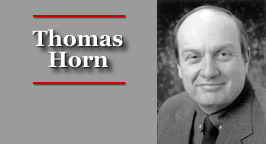
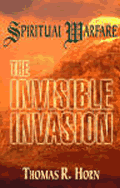
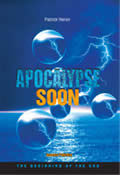



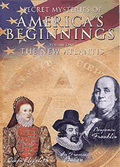





 Share
This Article
Share
This Article